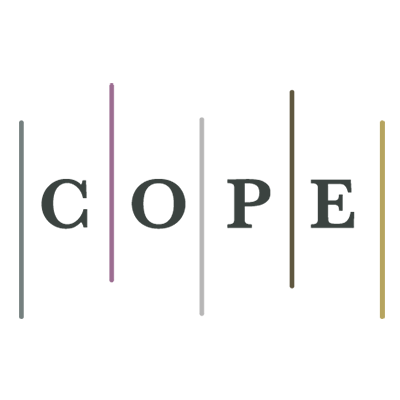Research Article
Review
Aim & Scope
Journal of Smart Systems Research(JOINSSR) aims to provide current practise and high quality studies about smart systems and their applications to researcher, engineers, professionals and people who are interested in this area. In addition, the purpose of the journal is to increase knowledge in this field. Journal of Smart Systems Research is a peer reviewed journal which publishes research papers, reviews, letters to editor and technical notes.
Journal of Smart Systems Research publishes multidisciplinary theoretical and applied scientific papers in the field of smart systems. Our journal accepts studies in the area of, but not limited to:
*Artificial intelligence applications*Sensor technologies
*Biomedical applications
*Smart materials
*Robotics
*Bioinspired smart systems applications
*Human-machine interaction
Author Guidelines
You can access the Turkish Template and English Template of the JOINIHP. JOINIHP accepts publications in Turkish or English. Copyright Transfer Form should be filled in by all authors of the article and sent to the editor. The publications of the authors who do not submit the relevant form will not be evaluated. In all submitted articles, a double-blind peer-review system is used. For this reason, the author’s informations in the template should be removed from the template at the first submission and the submission should be made without the author’s informations. The report showing the similarity rate should be uploaded together with the article by the author(s) of the article.
Articles should be submitted electronically as MS Word files. In the template, the page layout, font and point size to be used in the article are defined in detail and applied. Figures, graphics, pictures, formulas and tables should be original, produced in a clearly, ready for printing from the computer and should be refered in the text. The Journal Editor and Editorial Board are not responsible for transferring them to electronic media.
SUBU E-Journals are the Open Access Journals. Abstracts and full texts of all articles published by SUBU are freely accessible to everyone immediately after publication. For detailed information, click on Ethical Principles and Publication Policy.
ARTICLE LAYOUT
Your work should include the following sections:
Title
Summary
Keywords
(If your article is written in English, do not write a Turkish summary. Use Turkish template.)
1. Introduction
2. Methodology
3. Theory, Mathematical Expressions and Calculations
4. Results and Discussion
5. Conclusions
6. Declaration
7. Human and Animal Related Study (if any)
References
Appendices
Ethical Principles and Publication Policy
1. Open Access
Open Access is a publication model that enables the dissemination of research articles to the global community without any form of restriction. All articles published under open access can be accessed by anyone with internet connection.
The journal provides immediate open access to its content on the principle that making research freely available to the public supports a greater global exchange of knowledge. Abstracts and full texts of all articles published in this journal are freely accessible to everyone immediately after publication without any form of restriction.
2. Licence Terms
All articles in the journal are licensed under the Creative Commons Attribution 4.0 International License . This allows anyone to copy, redistribute, remix, transform, and build upon the work, provided the original work and source are properly cited.
3. Publication ethics
Conformity with publication ethics ensures the integrity of scientific publishing and trust in published articles. Therefore it is critical for the journal’s editors, authors, and peer reviewers conform to the ethical policies.
This journal complies with the principles described by COPE’s Code of Conduct and Best Practice Guidelines for Journal Editors (https://publicationethics.org/resources/code-conduct)). The journal publishes articles that comply with the principles of transparency and that fitted the best practice in scholarly publishing described by the Committee on Publication Ethics(COPE).
3.1 Originality and Plagiarism
Authors by submitting their writings to the journal declare that their work is original and authored by them; has not been previously published nor submitted for evaluation; original ideas, data, findings and materials taken from other sources (including their own) are properly documented and cited; their work does not violate any rights of others, including privacy rights and intellectual property rights; provided data is their own data, true and not manipulated. Plagiarism in whole or in part without proper citation is not tolerated by the journal. Writings submitted to this journal are checked for originality using anti-plagiarism software. Writings fixed to be unacceptably similar to other published works are immediately rejected.
Submitted writings must be the original work of the author(s). This journal follows COPE guidelines in suspected plagiarism cases.
3.1.1 Duplicate Submissions
Duplicate submission is the situation in which an author sends the same or similar articles to two different journals at the same time in this journal or another publisher. This includes presenting articles obtained from the same data in such a way that there are no significant differences in articles. Duplicate submission also includes sending the same/similar article to different journals in different languages. Submitted articles must not have been sent to any other journal. Submitting the same article to more than one journal at the same time involves unethical publishing behavior. Authors should also ensure that the article has not been previously published elsewhere.
3.1.2 Generation and Manipulation of Data
It is unethical to fabricate, alter or falsify data in an article. The journal takes into account the COPE guidelines dealing with suspicious data production and falsification cases.
3. 1.3 Manipulation of Citations
An article should contain only relevant citations. It is strongly discouraged to include citations that are not related to the work. Similarly, it is unethical for one to cite irrelevant self-quotes to increase one's citation.
4. Peer Review Process
The peer review system ensures the quality of a research article. The journal uses a strict peer review system. All submitted articles are subject to at least 2 peer-reviews before publication. The journal uses a double-blind peer review system.
The double-blind peer review system is an review system in which the identity of the author(s) of an article is hidden from selected reviewers. Any details that might enable a reviewer to identify the author(s) of an article are removed from the article before it is submitted to the reviewer. Similarly, the identities of the reviewers are also hidden from the authors when sending their comments to the author(s).
The journal considers the double-blind peer review system to be the most effective review system because it limits possible bias from selected reviewers or authors. It enables authors to improve their articles and assists editors in making decisions about articles.
In the Peer Review Process, a three-stage review process is used. Editorial office, peer reviews, and editor's decision.
The first stage of the review process takes place in the editorial office. At submission, an article is reviewed before it is submitted to external reviewers to ensure it meets the journal's minimum requirements. At this stage, the article is reviewed for:
4.1 Possible plagiarism: The article is evaluated to compare its level of similarity with other published works. The journal uses the İntihal.net similarity check system to achieve this goal. Articles that show a high level of similarity with other works (including previous work by the author(s)) will be rejected at this stage. A similarity report is given to the authors along with the decision to reject the article.
4.2 Scope: After an article is checked for similarity and it is decided that the similarity level is appropriate, the content of the article is checked whether it is suitable for the scope of the journal chosen by the author(s). In cases where the content of the article does not comply with the scope of the journal, the author's approval is sought to transfer the article to a more suitable journal. A transferred article is not automatically translated into an accepted article in the receiving journal. The manuscript still undergoes the usual peer review and may be accepted or rejected.
4.3 Current references: The journal encourages authors to cite current articles. Preferably, a significant portion of the cited articles should be works published within the last five years. This is especially important for articles submitted to journals in the life sciences field.
4.4 Spelling Language Control: The journal publishes articles in Turkish or English. English abstracts are sought for articles in Turkish. Full text articles is checked for grammar, order, accuracy, and intelligibility. The section editors usually correct minor grammatical errors without changing the meaning. However, in cases where the language is largely difficult to understand, the article is resended to the author to improve the clarity of the language. Articles that fail at this initial stage of the review process are resended to the author(s) for replacement and resubmission. This initial stage of review is crucial as it allows the author(s) to develop the article at an early stage. This first phase of article review is usually completed within a week.
After the The journal Section Editors have conducted a technical review to verify that all required documents have been submitted and the article complies with The journal, the editorial team will initiate a double-blind review process with at least two independent experts for scientific considerations, where the identities of the authors and reviewers are kept confidential. At least two independent reviwers are selected from our database, the journal's editorial board or other sources. These reviewers have expert knowledge about the subject area of the artical. Reviewers are invited to review the abstracts of the articles. After the article is accepted for review, the full text of the article, whose the authors are hidden, is sent to the reviewers.
The editor-in-chef is responsible for the final decision regarding the acceptance or rejection of articles. Peer-review is based on the originality, literature, methodology, technical quality, clarity of explanation, depth of research, presentation of the results and contribution to the field.
Finally, reviewers do one of the following:
- Acceptance
- Minor revision
- Major revision
- Not suitable for this Journal. Submit to another journal (recommend a journal)
- Reject
Publication planning of accepted articles is done. Articles that require revisions (minor or major) are sent to the author(s) to add the revisions suggested by the editor. After corrections are made, the editor re-examines the articles before they are accepted for publication. In some cases, the editor may ask the authors to make a second revision.
Reviewers are given 21 days for the peer-review process. Based on the reviewers’ comments, the article may go through more than one review. If revisions are required, the author(s) are required to prepare a revised article and response to reviewers within 30 days based on the reviewers’ comments. The section editor has a goal to have the first decision within 40 days of submission.
The journal considers the double-blind peer system as an effective review system because it limits possible bias from either the selected reviewers or from authors.
Article Evaluation Process
Validity Period of the Reviewer Invitation : 30 days
Extra Time Granted for Reviewer Invitation: 15 days
Reviewer's Evaluation Period: 21 days
Time Allowed for the Author to Make Revisions : 30 days
Extra Time Given to the Reviewer for Article Evaluation: 7 days
5. Duties of Editor-in-Chief & Section Editors
5.1 Objectivity
Editor-in-chief & section editors of the journal are account for deciding which of the manuscripts submitted to the journal ought to be published. In this process, the authors of the manuscript are not distinguished based on his/her race, ethnicity, gender, religion and citizenship by the editors. Editors´ decision to accept, revise or reject a manuscript for publication should be based merely on the importance, originality and clarity of the manuscript, and also convenience of the study performed in manuscript to the coverage of the journal.
5.2 Confidentiality
Editor-in-chief and section editors staff must not reveal any information about a submitted manuscript to anyone but the corresponding author, reviewers/potential reviewers and the publishing personnel. Editors will assure that all material submitted by authors remains confidential during the review process.
5.3 Conflicts of interest & Disclosure
Unpublished materials disclosed in a submitted manuscript must not be utilized in any reviewers’ own studies without expressing written permission of the author. Exclusive information or opinions attained from peer review process must be maintained confidential and not used for personal benefit. Reviewers ought not to take into account manuscripts in which they have conflicts of interest deriving from competitive, collaborative or other relationships/connections with any of the authors, companies or institutions linked to the articles.
5.4 Peer review process
The editor-in-chief/section editors must assure that a double-blind peer review process is effectively performed for each manuscript submitted to journal system.
5.5 Management of unethical behaviour(s)
The editors, together with the publisher(s), should take rationally responsive measures when ethical complaints have been presented regarding a submitted manuscript or published article.
6. Duties of Author(s)
An author is someone who contributes significantly to the development of an article. The author contributes to the publication in 4 stages:
- Significant contributions to the concept or design of the work
- Collection, analysis or interpretation of data for the study
- To draft the work or critically revising it for important intellectual content and final of the version to be published;
- To agree to be responsible for all aspects of the work in ensuring that questions regarding the accuracy or completeness of any part of the work are properly investigated and resolved.
6.1 Originality and plagiarism
The authors are responsible for the content, language and originality of the manuscript they submitted. The authors should assure that they have composed their original works entirely, and if the authors have used the study and/or words of other authors, that this has been conveniently cited or quoted. Plagiarism takes many forms varying from “passing off” someone´s paper as the authors’ own paper to copying or paraphrasing important parts of someone´s paper (without attribution), to claiming results from research performed by others. Plagiarism in all its forms comprises unethical publishing behaviour and is inadmissible. Before being sent a manuscript to reviewers, it is checked in terms of similarity by İntihal.net to explore the plagiarism.
The authors are required to fill the Copyright Form while submitting to this journal.
6.2 Changes in Authorship
When changes are required in the authorship of an article or a published article, the changes will be applied according to the COPE specification. Only relevant authors can request a change of authorship by notifying the editor.
ICMJE - Defining the Role of Authors and Contributors
COPE - Flowcharts for Changes in Authorship
6.3 Submitting the Article
Authors should read the Ethical Prensiple and Publication Policies "Duties of Authors" section and template before submitting. The article should be prepared according to the style and characteristics of the journal policy. Authors listed in the article must have met the authorship requirements. The contribution of each of the authors should be cited. After an article is submitted, it is therefore assumed that all authors have read the article and given consent to submit the article. Contact information of all authors should be stated in the article. The Conflict of Interest Statement should be stated in the article.
6.4 Conflict of Interest
In case of any conflict of interest, the authors must inform the journal editor. When necessary, the author should cooperate with the editorial board and publisher for the correction or retraction process.
WAME - Conflict of Interest in Peer-reviewed Journals
6.5 Confidentiality
A submitted article is confidential material. The journal will not disclose the submitted articles to anyone other than the people involved in the processing and preparation of the article for publication. These people include the editorial staff, related authors, potential reviewers, actual reviewers and editors. However, in cases of suspect of misconduct, an article may be disclosed to members of the ethics committee of journals and to institutions/organizations that may be required from it to resolve the misconduct. The journal will follow the appropriate COPE flowcharts when necessary.
ICMJE - Responsibilities in the Presentation and Peer Review Process
STM - International Ethical Principles for Scientific Publication
6.6 Data access & retention
Authors might be asked to ensure the raw data in connection with a paper for editorial review process, and should in any event be prepared to keep in such data for a moderate time after publication.
6.7 Acknowledgements
Acknowledgments should be made to individuals who participated in the development of a paper but who did not qualify as authors. Organizations providing support in terms of funding and/or other resources should also be included in the acknowledgments section.
6.8 Revision and Retraction of Articles
With the authorization of the journal editor, corrections can be made by the authors in an article published in accordance with the COPE principles.
6.9 Principal errors in published studies
When an author corresponds to a significant error or inaccuracy in his/her own published work, it is the author´s obligation to notify swiftly the journal editor or publisher and cooperate with the editor to retract or correct the paper.
7. Duties of Reviewers
The review process is an important aspect of the publishing process of an article. It helps an editor make a decision about an article and also allows the author to improve the article. A double-blind referee evaluation system is used.
Before accepting to review an article, the following must be provided:
- The article must be within the reviewer's own area of expertise.
- Reviewers should be able to devote appropriate time to a critical review of the article.
Reviews should be honest and unbiased. Reviewers should not be influenced by the author's origin, the author's religious, political or cultural perspective, the author's gender, race, ethnicity, or nationality. Articles should be examined in terms of originality, level of impact, technical quality, clarity of presentation, and depth of research.
Reviewers also:
- Observes that the author(s) comply with the instructions, publication policies and publication ethics.
- Observes that the writing rules of the appropriate journal are followed. The reviewer's report should be accurate, objective, constructive and clear. Comments should be supported by facts and constructive arguments about the content of the article. Reviewers should avoid using "hostile, derogatory, and accusatory comments."
- Reviewers should not rewrite the article; however, suggestions should be made for necessary corrections and improvements.
7.1 Contribution
Reviewers are the main members contributing to the quality of the journal being a peer reviewed one. The reviewers who feel unqualified to review the received manuscript must swiftly notify the editor and reject to review that manuscript.
7.2 Confidentiality
Any manuscripts received for review must be treated as confidential documents. They must not be shown to or discussed with others except as authorized by the editor.
7.3 Objectivity standards
Reviews should be objectively performed. Personal criticism of the author is unsuitable. Referees should frankly express their aspects with supporting arguments.
7.4 Timeliness
Reviewers should only accept evaluation of articles they are confident they can take the appropriate time to review. Therefore, reviewers should review in a timely manner or return articles.
The reviewer's suggestion should be one of the following:
- Acceptance
- Minor revision
- Major revision
- Not suitable for this Journal. Submit to another journal (recommend a journal)
- Reject
The proposal should be supported by constructive arguments and facts depending on the content of the article.
7.5 Acknowledgement of sources
Reviewers should describe relating published study which has not been cited by the authors. Any statement that an observation, derivation, or argument had been previously reported should be accompanied by the relevant citation. A reviewer should also point out to the editor’s attention any vital resemblance or coincide between the manuscript under consideration and any other published paper of which they have personal information.
COPE Ethical Guidelines for Peer Reviewers
ICMJE - Responsibilities in the Submission and Peer-Review Process
WAME - Conflict of Interest in Peer-Reviewed Medical Journals
8. Article Processing Charge(APC)
No fee is charged from the authors in processes such as the evaluation/printing of the articles sent to journal.
9. Archiving Policy
-Digital Archiving
This journal is committed to the long-term preservation of its content. The journal utilizes the Dergipark system to create a distributed archiving system. Dergipark uses the journal management system of ULAKBİM Journal Systems (UJS). In addition, SUBU Journals encourages authors to archive the published version of their articles on their institutional repositories and as well as other appropriate websites.
- Self-Archiving
The journal permit authors to archive any version of their article they find most suitable, including the published version on their institutional repository and any other suitable website.
10. Copyright
Authors must transfer the copyright to this journal and authors retain significant rights to use and share their own published articles without restrictions. The journal supports the need for authors to share, disseminate and maximize the impact of their research and these rights. Copyright Transfer Form should be filled in by all authors of the article and sent to the editor.
11. Article Retraction Process
The retraction of a published article is made upon the joint request of all the authors of the relevant article. Information about the retraction article is reported under the title of RETRACTION in the first issue to be published after the author(s) applied to our editorship.





Price Policy
No fee is charged for any of the articles submitted to the JOINSSR.
Indexes
Other Indexes
Journal Boards
Editor-In-Chief
Editors

Editorial Board


Language Editor

Secretary

Publication Board







